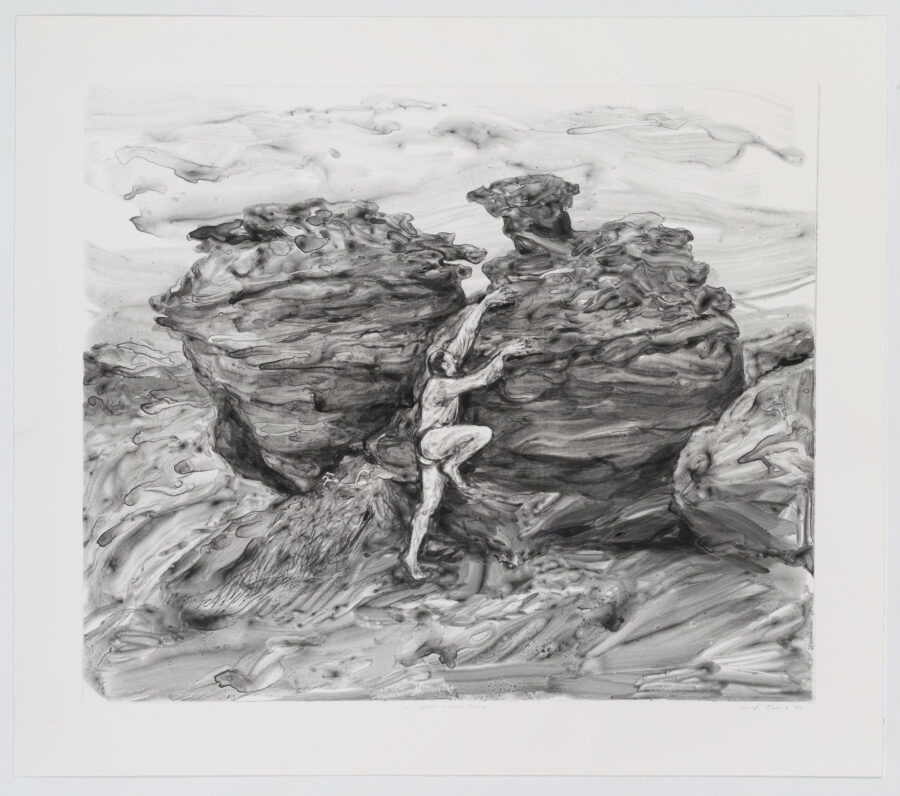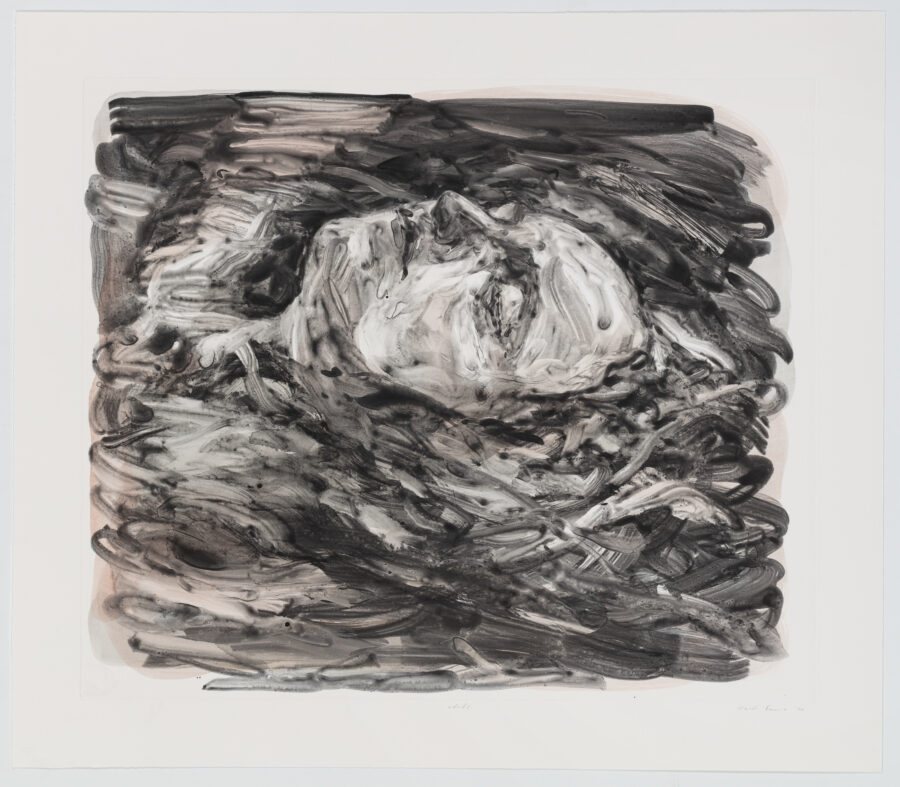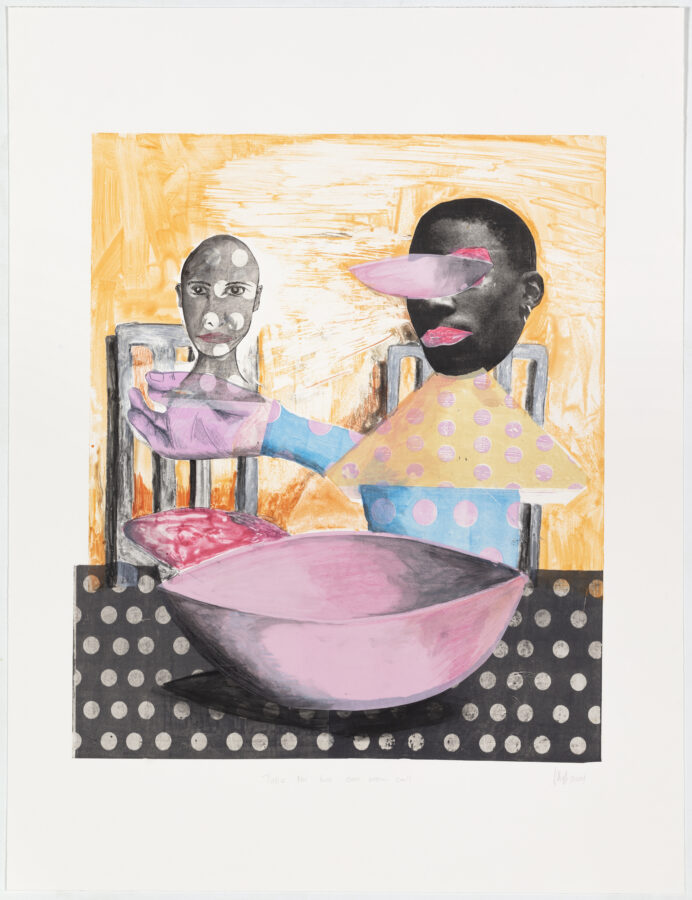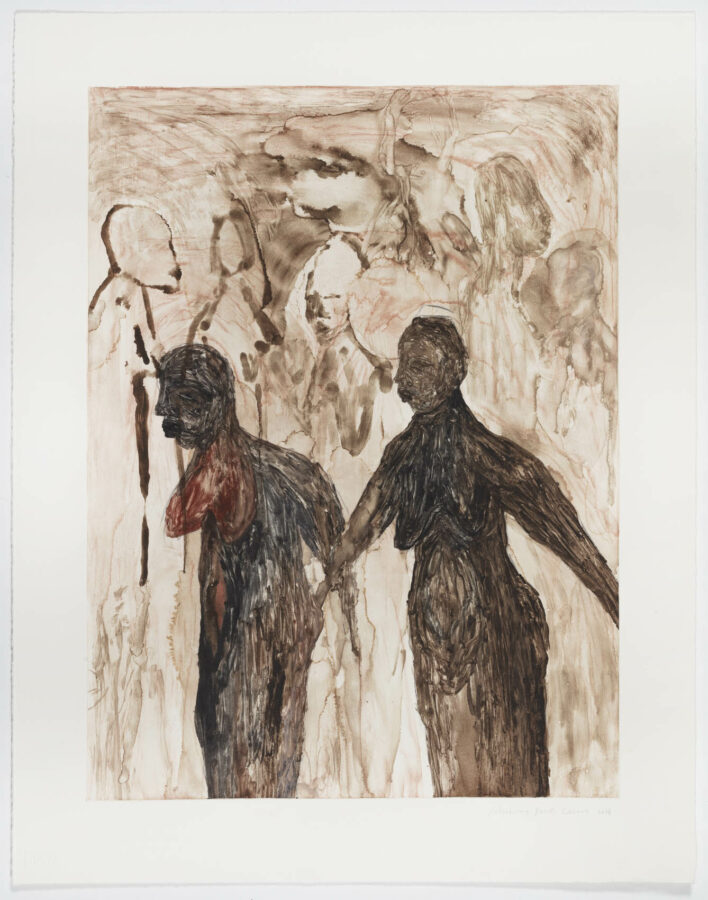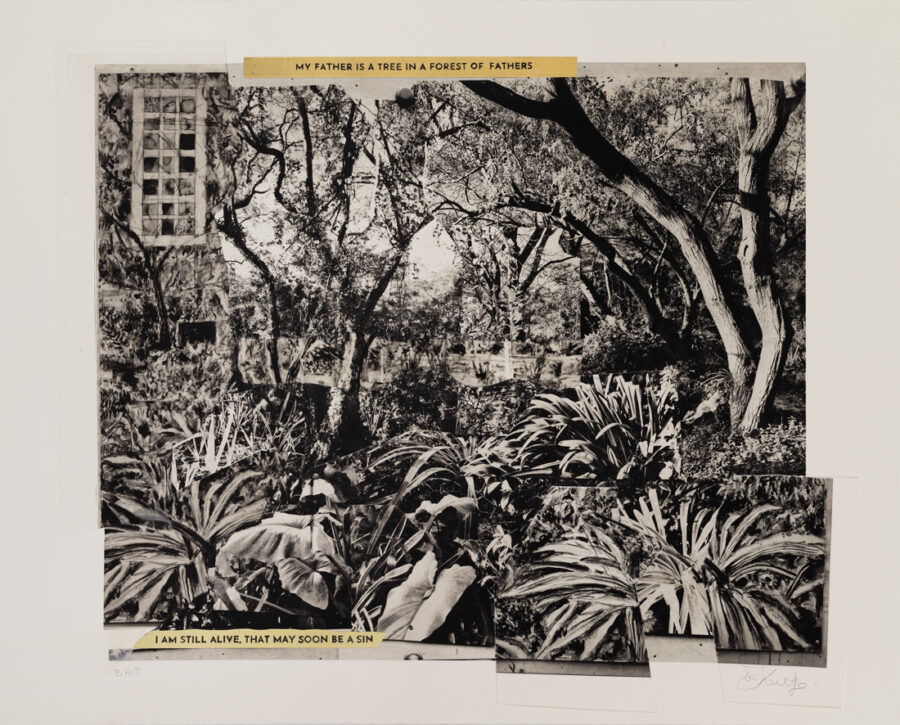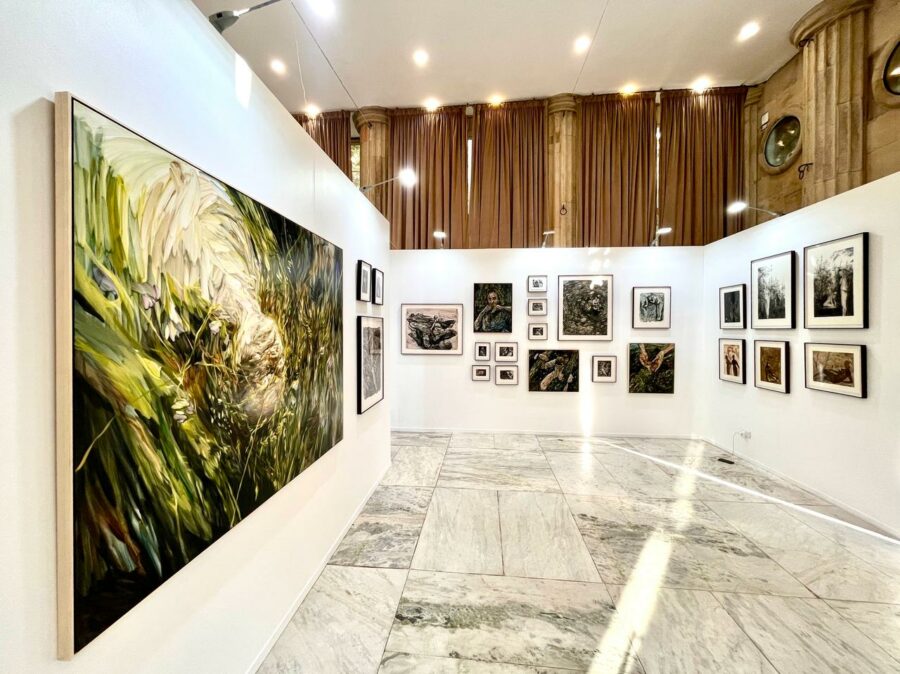
David Krut Projects is delighted to be participating in this year’s instalment of the RMB Latitudes Art Fair. This year we will be presenting new works by ongoing collaborators, Heidi Fourie, William Kentridge and Phumulani Ntuli and introducing Nthabiseng Boledi Kekana. Each of the new works, created in collaboration with the David Krut Workshop are thematically linked by the artist’s unique exploration of the ‘landscape’, both physical and metaphysical.
In the early stages of art history, landscapes served as mere backdrops for central compositions. By the late 19th century, artists began to progress the landscape as a practice of capturing the emotional, atmospheric and even spiritual qualities of the natural world. Where we stand today, the interpretations of the landscape (along with most other things) are endless. This year, we invite you to wander through these visual landscapes: real, imagined, suggested or divine.

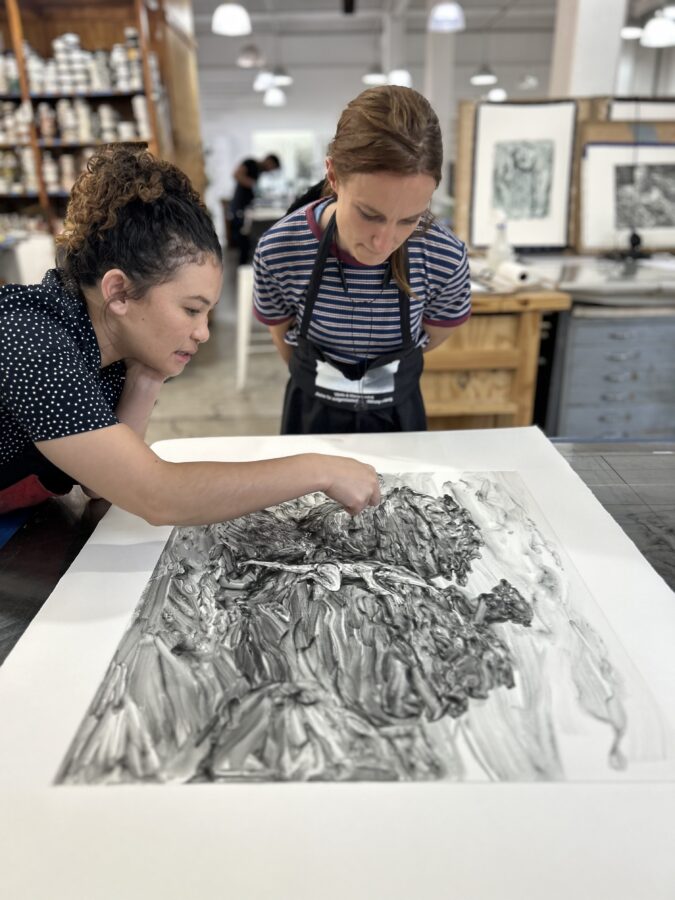
For Heidi Fourie, the landscape serves not only as a sense of place, but foremost the protagonists – her visual world is built around the total immersion of figurative motifs into the landscape. It is natural to get lost in Fourie’s images. Her mesmerising mark making allows her figures to melt into her landscapes. Colour has always been important in Fourie’s images, however this year, she has challenged herself to produce a monochromatic body of work. Fourie has elevated her understanding of printmaking and its mediums by manipulating traditional water-soluble materials to make a charcoal like texture. Her sketches were translated into varying shades from the deepest black to the lightest grey, through the monotype process.

Phumulani Ntuli’s works go beyond our physical realm as he rifles through history, imagination and technology. Ntuli creates imagined landscapes by collaging the past, present and future. His ‘landscapes’ serve as a staging for his character’s exploration of collective histories and technological impacts on our societies, often working with digital tools such as AI and archival imagery. Through the process of collaging wrapping paper patterns and hand painted elements onto a Perspex plates, Ntuli is building metaphysical environments. These collaged worlds become symbolic stages where traditional emblems coexist with futuristic visions. Ntuli’s approach not only puzzles the distinction between past and future but also prompts us to reconsider the ways in which metaphysical landscapes can serve as dynamic sites of cultural exploration and transformation.

Nthabiseng Boledi Kekana’s work centers her work around a profound connection to her heritage, femininity, and spirituality. In her gestural figurative works, Kekana explores otherworldly ideas, influenced by ancestral guidance. Kekana’s images present the viewer with landscapes from a spiritual perspective, centring around a universal feminine entity. Her landscapes are not bound by physical constraints, but instead, exist in a realm of dreams, visions and emotions. Using a limited pallet made of earthly tones and elements of the natural world, her gestural figures dance, float and reach through her environments. Through this blend of naturalistic representation and spiritual evocations, Kekana invites viewers to journey with her into introspective landscapes.

Over the years, William Kentridge has developed a prolific career with many reoccurring motifs in his oeuvre – the land, trees and other natural elements are certainly an example of this. The works of Kentridge have an alluring quality of ambiguity but will always reveal themselves to be certain in intention. Debuting at Latitudes 2024 are new editioned works created by Kentridge Studios in collaboration with David Krut Workshop and Jillian Ross Print. Most recent being, ‘My Father is a tree in a forest of fathers’. The work is based on the new stage production, ‘The Great YES and the Great NO’, co-produced by Kentridge and the Centre for the Less Good Idea, which will be presented in July, 2024 in Aix-en-Provence, France. This large–scale garden–scape was initially rendered as a backdrop for the stage production, through the collaboration between DKW and JRP, this image has transformed into a new body of work. In addition, the figures in Procession I & II embody a continuum of Kentridge’s seven preceding sculptural works relating the Procession prints to various projects such as; The Great Yes, The Great No, Oh To Believe In Another World and drawings from the series Chiesa di San Francesco Saverio, Palermo Cash Book Drawings (V-VIII). Tree (Century Dictionary) and Tree (Britanica) celebrate the simplicity of the land while enveloping the energy of his on-going explorations – Kentridge’s landscapes exist in between the purpose of context and metaphor.
